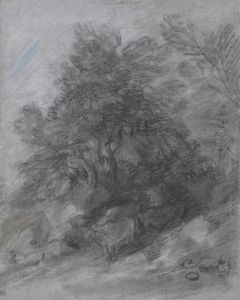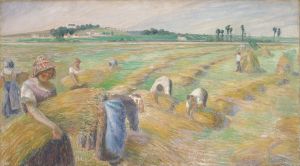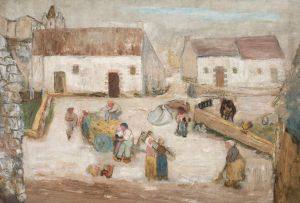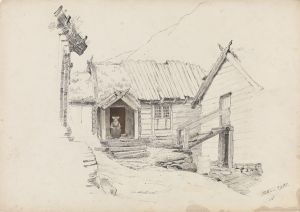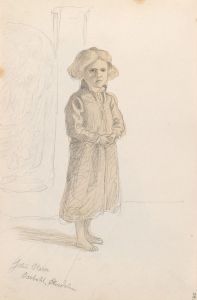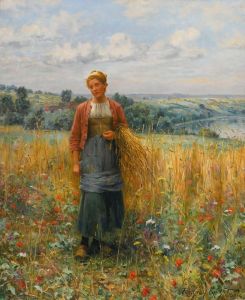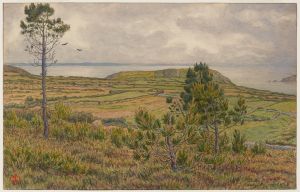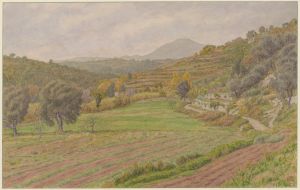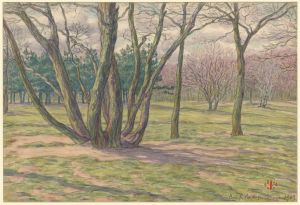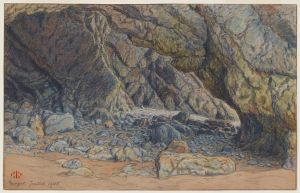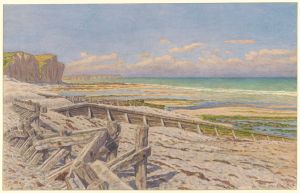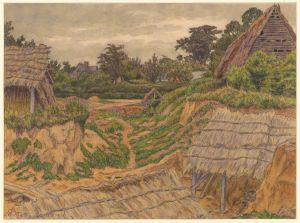
Fermes à Bormes
A hand-painted replica of Henri Rivière’s masterpiece Fermes à Bormes, meticulously crafted by professional artists to capture the true essence of the original. Each piece is created with museum-quality canvas and rare mineral pigments, carefully painted by experienced artists with delicate brushstrokes and rich, layered colors to perfectly recreate the texture of the original artwork. Unlike machine-printed reproductions, this hand-painted version brings the painting to life, infused with the artist’s emotions and skill in every stroke. Whether for personal collection or home decoration, it instantly elevates the artistic atmosphere of any space.
Henri Rivière (1864-1951) was a French artist known for his contributions to the field of printmaking and his involvement in the late 19th and early 20th-century art movements. One of his notable works is "Fermes à Bormes," which translates to "Farms at Bormes." This piece exemplifies Rivière's distinctive style and his ability to capture the essence of the French countryside.
Henri Rivière was deeply influenced by Japanese art, particularly ukiyo-e woodblock prints, which is evident in his use of color and composition. He was a key figure in the revival of color printmaking in France and was associated with the Nabis group, which included artists like Pierre Bonnard and Édouard Vuillard. Rivière's work often depicted landscapes and rural scenes, reflecting his appreciation for nature and the simplicity of rural life.
"Fermes à Bormes" is a testament to Rivière's skill in capturing the serene beauty of the French landscape. Bormes-les-Mimosas, the location depicted in the artwork, is a picturesque village in the Provence-Alpes-Côte d'Azur region of southeastern France. Known for its charming medieval architecture and lush surroundings, Bormes-les-Mimosas provided Rivière with ample inspiration for his work.
The artwork showcases Rivière's mastery of color and light, with a particular emphasis on the harmonious interplay between the natural environment and human habitation. The farms are depicted with a sense of tranquility and timelessness, characteristic of Rivière's approach to landscape art. His use of soft, muted colors and delicate lines creates a peaceful and inviting scene, inviting viewers to appreciate the quiet beauty of rural life.
Rivière's technique in "Fermes à Bormes" likely involved the use of lithography, a medium he frequently employed. Lithography allowed him to achieve a high level of detail and subtle gradations of color, which are evident in the careful rendering of the landscape. The composition is balanced and thoughtfully arranged, guiding the viewer's eye through the scene and highlighting the natural beauty of the area.
Henri Rivière's work, including "Fermes à Bormes," has been celebrated for its contribution to the development of modern printmaking. His ability to blend traditional techniques with contemporary influences resulted in a unique and enduring body of work. Rivière's prints continue to be admired for their technical excellence and their evocative portrayal of the French countryside.
In summary, "Fermes à Bormes" by Henri Rivière is a significant piece that reflects the artist's dedication to capturing the essence of rural France. Through his expert use of lithography and his keen eye for composition and color, Rivière created a work that remains a beautiful and serene representation of the French landscape.






